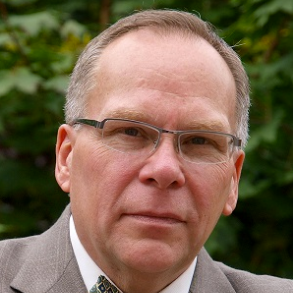Here we go again. It is the Quadrennial Quest for the next "great" leader of the United States. It is too bad we are fixated on a Presidential leadership model that has not worked well in the recent past and increasingly holds little hope for the future. Are we ready to embrace a different approach to leadership that is a better practice now and in the future?
 It does not appear so, according to the coverage of the approximately 20 Presidential candidates mucking their way through my beloved Iowa State Fair and spouting their solutions for every issue imaginable during this past week. Yes, mucking and spouting...spouting and mucking, ad nauseam. By the way, my favorite imitation of an Iowan from this week's coverage was performed by Republican candidate Carly Fiorina. Fiorina appeared in a photo at the Iowa State Fair in front of the famous Butter Cow dressed in a plaid-flannel shirt and blue jeans. Please. What idiot campaign aide told her THAT would be a good idea? Just to set the record straight, in this same posting on my website at www.nonprofitgp.com, I've included random photos of what REAL Iowans look like and how they dress on the job. But I digress.
It does not appear so, according to the coverage of the approximately 20 Presidential candidates mucking their way through my beloved Iowa State Fair and spouting their solutions for every issue imaginable during this past week. Yes, mucking and spouting...spouting and mucking, ad nauseam. By the way, my favorite imitation of an Iowan from this week's coverage was performed by Republican candidate Carly Fiorina. Fiorina appeared in a photo at the Iowa State Fair in front of the famous Butter Cow dressed in a plaid-flannel shirt and blue jeans. Please. What idiot campaign aide told her THAT would be a good idea? Just to set the record straight, in this same posting on my website at www.nonprofitgp.com, I've included random photos of what REAL Iowans look like and how they dress on the job. But I digress.
The United States, and most other countries, are locked into a mythic model of leadership known formally as the "Great Man" theory. In the 1970's "Transformational Leadership" theory was introduced by James MacGregor Burns. Transformational Leadership became, and remains very popular, though it still retains many elements of the Great Man theory because of its dependence on a single individual to lead the way and call forth the inner leader of others.
I am convinced we will not make real progress in being greater and doing greater good until we renounce our heretical faith in the power of a single great leader. The velocity of knowledge and the complexity of our world are forcing us to consider other approaches. For me, shared leadership in a collaborative culture is more realistic and hopeful.
Recently I again observed the power of shared leadership and collaboration in action. For the past two summers I have taught "Managing for Optimal Performance" in the MBA in Economic Development program at Eastern University. It has been a small class, only three and four students, possibly because the focus on the program is on alleviating poverty which is certainly not the typical career path for many MBAs. The course is very short...barely six weeks. Yet, in that time, students are expected to design, deliver, and report out on a project that is intended to help people living at or near the poverty level. This summer's projects included a soccer clinic for Haitian immigrant youth; distribution of nutritional information and recipes at an urban farmer's market; a family photo project for immigrant Latin American single mothers and their children; and a "good neighbor" yard clean up and home fix-up day for a single mom recently debilitated in an accident. In all cases, the students were required to form a team of no less than four people and to use decision making processes that were inclusive and collaborative. The project reports clearly showed the depth of understanding the students' acquired about establishing a collaborative culture and using shared leadership.
As I reflected on their project journals and reports, I found myself thinking about those things I am most likely to hear come from the mouths of leaders who really try to practice shared and collaborative leadership.
"Please." Collaborative leaders do not just assume people will follow them because they have the title, the position, the power, or even a "mandate." They invite others into leadership, humbly seek their expertise, and genuinely value the contribution each makes.
"How or what do you see, understand, experience, or believe about our situation?" For collaborative leaders, the perspectives of others are invaluable sources of information. They understand that many of the problems we face are so large and so complex that the better solutions are found when many eyes from diverse viewpoints are examining them.
"What options do you believe offer us the best chance of addressing the situation?" Working in collaboration means gleaning the best ideas from among the many perspectives on the situation without regard for self-interests. I know. If I had not thrown in that bit about self-interests, it would have been just fine, right? My experience has been that partners in shared or collaborative leadership often filter their ideas in order to protect self-interests. They may fear giving away proprietary information or trade secrets that can weaken their competitive advantage over competitors, who may also be their collaborators on some projects.
"Thank you." These two under-utilized words powerfully acknowledge that a single individual alone is not responsible for any good thing that happens. These are words of humility that indicate a collaborative leader's awareness of the role of others.
"We did it." This is a tricky thing for a collaborative leader to say because it is so tempting to say it without really meaning it. It can merely sound like an imitation of humility, if it does not come from a genuine posture of humility. Know what I listen for? Emphasis. When I hear the word "we" emphasized too strongly, I suspect leaders are trying too hard to convince themselves and others that they really mean "we" and not "I."
Spewing from the mouths of muckers and spouters, these same five phrases can be just empty words in a crass imitation of humility. Whether the speakers are vying for the role of President, Prime Minister, or leader of a local community change effort, we must watch and wait. We need to be on the lookout for those who reveal their collaborative nature through the congruence of consistently matching these words with a posture of humility.
Email Tom: twklaus@nonprofitgp.com
Visit Tom's website: www.tomklaus.net





